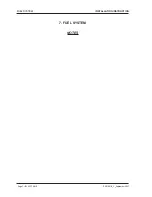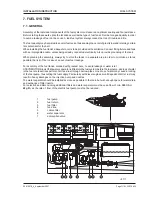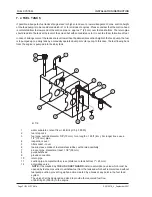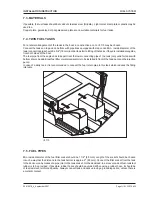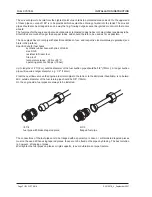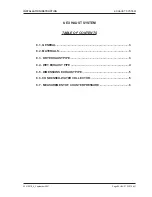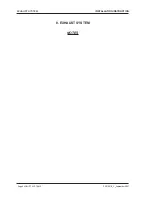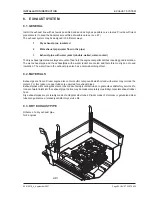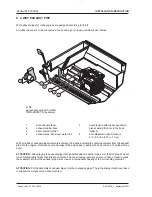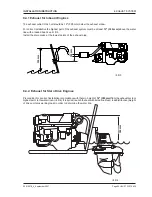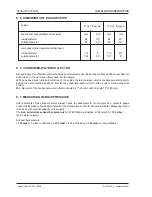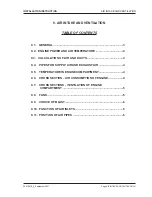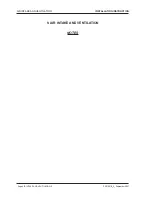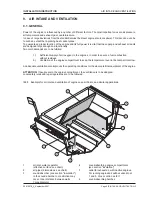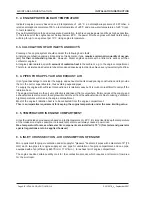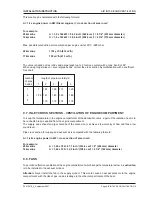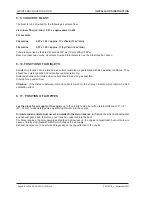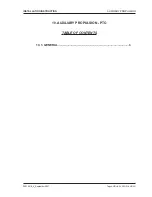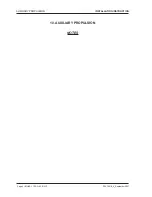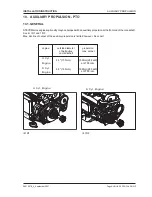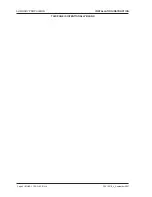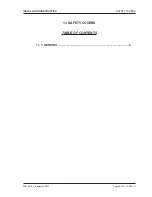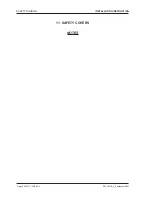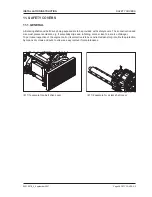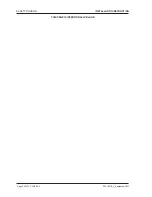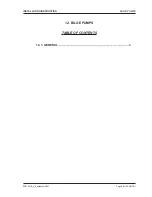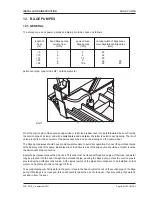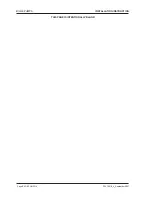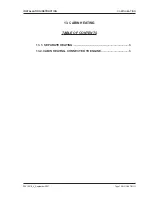
AIR INTAKE AND VENTILATION
Page AIR INTAKE AND VENTILATION-4
Z001007/0_4_September 2007
INSTALLATION INSTRUCTION
9. 2. ENGINE POWER AND AIR TEMPERATURE
Indicated engine power is based on an air temperature of +25°C, an atmospheric pressure of 997 mbar, a
relative atmospheric moisture of 30%, a fuel temperature of +20°C and a sea water temperature of +25°C (acc.
to test standards).
Pay particular attention to good air supply and ventilation, to achieve engine power and life as high as possible.
If the intake air of the engine cannot be kept below +40°C, the power of turbo engines with boost intercooling
will drop for up to one percent per 10°C rising engine temperature.
9.3. CALCULATION OF AIR INLETS AND DUCTS
Planning of an engine system should consider the following basic facts.
All internal-combustion engines, irrespective of trade mark or type,
require a certain min. quantity of oxygen
(air) for their combustion process.
However, Diesel engines operate with a little more excess air than
carburetor engines.
All engines also radiate a specific
amount of radiation heat
to the ambient, e.g. to the engine compartment.
Therefore, air inlet and air ducts are to be dimensioned spaciously in order to achieve a very low velocity of airflow.
9. 4. PIPES FOR SUPPLY AIR AND EXHAUST AIR
It is of great advantage to consider the supply- and exhaust air ducts already during construction and to provide
them in the hull or superstructure, thus avoiding exposed pipes.
To supply the engine with sufficient combustion air is relatively easy but it is much more difficult to carry off the
radiation heat.
The engine itself sucks in the air very effectively and takes it from everywhere. If dimensions of the supply- and
exhaust air ducts are too small, the engine will suck in the air from the exhaust air ducts. Due to missing ventilation
high temperatures will arise in the engine compartment.
Most of the engine's radiation heat is to be conducted from the engine compartment.
This is an imperative requirement for keeping the engine temperature under the max. limiting value.
9. 5. TEMPERATURE IN ENGINE COMPARTMENT
Since the indicated engine power is based on a test temperature of +25°C, it is important to keep the temperature
of the intake air as low as possible. Increased temperature will always cause a power loss.
Max. temperature for areas where electric components are installed is 70°C (for starter and generator
special regulations are to be applied however)
9. 6. INLET CROSS SECTION - AIR CONSUMPTION OF ENGINE
Min. requirement for proper ventilation and air supply for "pleasure" boats are 4 pipes with a diameter of 3" (75
mm) each; two pipes for engine supply air, one pipe for ventilation of engine compartment, and one pipe,
equipped with a fan (efficiency 440 ft³/min / 11 m³/min.), for exhaust air of engine compartment.
The engine needs a certain quantity of air for the combustion process, which requires a certain min. flow area
for the air stream.

